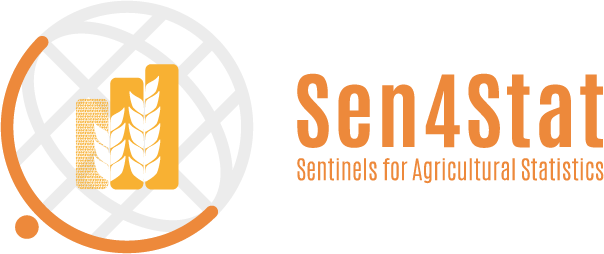Consistent design is a fundamental requirement for official statistics, and design-based inference provides a statistical approach to meet this requirement. This approach involves two main tasks: sampling design and estimation.
Sampling design distinguishes between two types of data: survey data and auxiliary data. High-quality survey data must be unbiased and reliable, and collected on the ground using established protocols and unbiased measurement instruments. Survey data are costly, which is why they are observed in a small sample of the population to achieve the desired level of accuracy. Auxiliary data, on the other hand, must be available at a low cost and have a non-zero correlation with the survey data. EO data falls into this auxiliary category as they are free and have a significant correlation with most of the survey variables used in agricultural statistics.
Sen4Stat's use cases will explore how EO data can contribute to the two main tasks of the statistical framework: (i) sampling design and (ii) estimation. Six use cases have been identified in collaboration with the pilot NSOs.
Use cases identified with the pilot NSOs
- The "cost-effectiveness" use case will evaluate how EO data can contribute to reducing survey costs by decreasing the sample size and/or increasing efficiency through reducing the sampling error.
- The "spatial disaggregation" use case will rely on EO data to enable statistics disaggregation at small administrative levels (e.g. province, county), thereby enhancing statistical granularity.
- The "timeliness" use case will demonstrate how EO data can be used to predict statistics and provide early estimates before or just after the season's end, making it more timely than official statistics, which are often available later. Seasonal estimates may also be part of this use case for countries with multiple consecutive crops and the appropriate ground data.
- The "sampling design" use case will assess how EO data can support the development of an area sampling frame (moving from LIST/POINT) and determine optimal sample and segment sizes.
- The "data quality control" use case will implement procedures based on EO data to minimize uncertainty in the ground database (data collection protocol & quality control procedure).
- The "SDG reporting" use case will explore how EO data can provide relevant information to support the reporting of specific indicators related to SDGs 2 "Zero Hunger" and 6 "Clean Water and Sanitation".
Sen4Stat use cases

